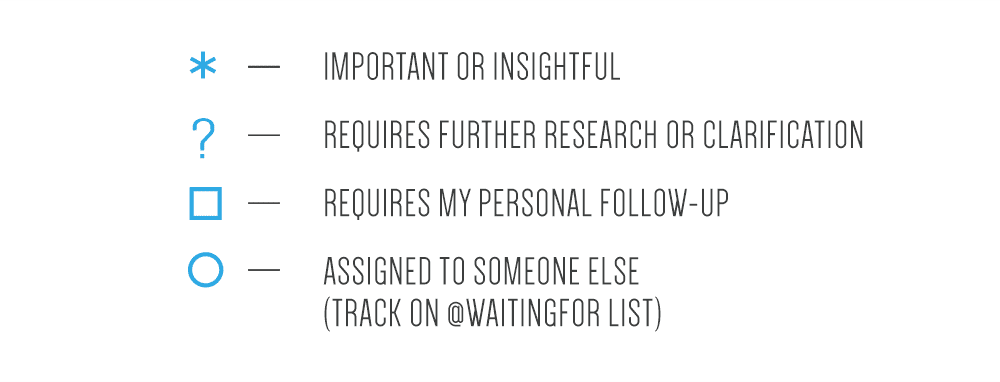5 Simple Ways to Recover the Lost Art of Note Taking
If you spend much time in meetings or presentations, note taking is a survival skill. So I’m surprised at how few people bother to do it. Those who do sometimes express frustration at how ineffective it can be.
I don’t recall anyone ever teaching me how to take notes. I didn’t learn it in school—not even in college. Nor did I learn it from others on the job. It was something I had to pick up on my own.
That's probably true for a lot of people, and I bet it's why so few people bother to take notes. No one has ever told us why it's important or how to do it. That ends here. I'm going to share not only why you should take notes but also offer four suggestions on how to do it better.
Reasons for note taking
To begin with, note taking enables you to stay engaged. The real benefit is not what happens after the meeting but during the meeting itself. Taking notes not only keeps us focused, it also triggers critical, constructive thinking.
If I don’t take notes in meetings or presentations, my mind wanders. But when I do, I stay more alert and involved. As a result, my contribution is more likely to add value. For this reason, I take notes even if someone is officially taking minutes.
Note taking also captures in-the-moment insights, questions, and commitments. Not everything can be resolved immediately. Some ideas take incubation. Questions require further research. Commitments require followup that cannot be done until after the meeting. Without a way to capture these, they’ll just get lost.
Your notes are like a time machine that let you go back days, weeks, even years. I can’t tell you how many times my notes have saved my bacon—not only when trying to resolve a dispute, but in holding people accountable or retrieving a key insight I subsequently forgot.
Finally, note taking communicates the right things to the other attendees. This is probably my favorite reason of all. When someone takes notes, it communicates to everyone else that they’re actively listening and that what others are saying is important.
If you’re in leadership, it also subtly establishes accountability. Your people think, If the boss is writing it down, he probably intends to follow-up. I'd better pay attention. As a leader, your example speaks volumes. If you take notes, your people will likely take notes. If you don’t, it is likely they won’t.
But how can you more effectively take notes?
1. Choose the right tool
If you have something that's working for you, great. It could be a state-of-the-art app or yellow legal pad. Whatever's working for you, stick with it. I usually recommend a journal-formatted notebook. I currently use the daily notes section of my Full Focus Planner™ and never go anywhere without it.
2. Give your notes structure
Especially if the meeting or the presenter is unstructured. I give each new meeting or subject its own heading, along with the current date. Imposing order and hierarchy with headers, numbered sections, and nested bullets is a big help. This focuses your thinking and simplifies review and retrieval.
3. Record whatever's important or interesting
I recommend recording any or all of the following things: the presenter's outline, questions being asked or addressed, key insights you have independent of what's being said, along with any useful illustrations, jokes, anecdotes, diagrams, or quotes.
4. Use symbols so you can quickly scan your notes later
I indent my notes from the left edge of the paper about half an inch. This allows me to put my symbols in the left margin. I use four:
- If an item is particularly important or insightful, I put a star next to it.
- If an item requires further research or resolution, I put a question mark next to it.
- If an item requires follow-up, I put an open square next to it. When the item is completed, I check it off.
- If I have assigned a follow-up item to someone, I put an open circle next to it. In the notes, I indicate who is responsible—or just put their initials in the circle. When the item is completed, I check it off.

(By the way, this system is built into my Full Focus Planner™.)
5. Schedule time to review your notes
This is key. I scan my notes immediately after the meeting if possible. If that is not possible, then I do it at the end of my workday. If I miss several days, I do it during my weekly review.
Regardless, I take action on those items that I can do in less than a few minutes. Those that will take longer I drop in my task manager and intentionally procrastinate till a later date.
No one can count on total recall. Great notes are the closest thing to a time machine we’ll ever get.
Disclosure of Material Connection: Some of the links in the post above are “affiliate links.” This means if you click on the link and purchase the item, we will receive an affiliate commission. Regardless, we only recommend products or services we use and believe will add value to our readers. We are disclosing this in accordance with the Federal Trade Commission’s 16 CFR, Part 255: “Guides Concerning the Use of Endorsements and Testimonials in Advertising.









